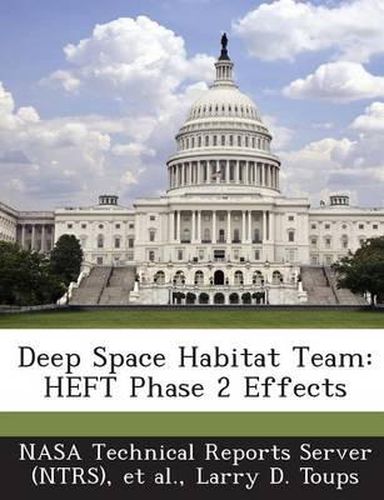Readings Newsletter
Become a Readings Member to make your shopping experience even easier.
Sign in or sign up for free!
You’re not far away from qualifying for FREE standard shipping within Australia
You’ve qualified for FREE standard shipping within Australia
The cart is loading…






HEFT was a NASA-wide team that performed analyses of architectures for human exploration beyond LEO, evaluating technical, programmatic, and budgetary issues to support decisions at the highest level of the agency in HSF planning. HEFT Phase I (April - September, 2010) and Phase II (September - December, 2010) examined a broad set of Human Exploration of Near Earth Objects (NEOs) Design Reference Missions (DRMs), evaluating such factors as elements, performance, technologies, schedule, and cost. At end of HEFT Phase 1, an architecture concept known as DRM 4a represented the best available option for a full capability NEO mission. Within DRM4a, the habitation system was provided by Deep Space Habitat (DSH), Multi-Mission Space Exploration Vehicle (MMSEV), and Crew Transfer Vehicle (CTV) pressurized elements. HEFT Phase 2 extended DRM4a, resulting in DRM4b. Scrubbed element-level functionality assumptions and mission Concepts of Operations. Habitation Team developed more detailed concepts of the DSH and the DSH/MMSEV/CTV Conops, including functionality and accommodations, mass & volume estimates, technology requirements, and DDT&E costs. DRM 5 represented an effort to reduce cost by scaling back on technologies and eliminating the need for the development of an MMSEV.
$9.00 standard shipping within Australia
FREE standard shipping within Australia for orders over $100.00
Express & International shipping calculated at checkout
Stock availability can be subject to change without notice. We recommend calling the shop or contacting our online team to check availability of low stock items. Please see our Shopping Online page for more details.
HEFT was a NASA-wide team that performed analyses of architectures for human exploration beyond LEO, evaluating technical, programmatic, and budgetary issues to support decisions at the highest level of the agency in HSF planning. HEFT Phase I (April - September, 2010) and Phase II (September - December, 2010) examined a broad set of Human Exploration of Near Earth Objects (NEOs) Design Reference Missions (DRMs), evaluating such factors as elements, performance, technologies, schedule, and cost. At end of HEFT Phase 1, an architecture concept known as DRM 4a represented the best available option for a full capability NEO mission. Within DRM4a, the habitation system was provided by Deep Space Habitat (DSH), Multi-Mission Space Exploration Vehicle (MMSEV), and Crew Transfer Vehicle (CTV) pressurized elements. HEFT Phase 2 extended DRM4a, resulting in DRM4b. Scrubbed element-level functionality assumptions and mission Concepts of Operations. Habitation Team developed more detailed concepts of the DSH and the DSH/MMSEV/CTV Conops, including functionality and accommodations, mass & volume estimates, technology requirements, and DDT&E costs. DRM 5 represented an effort to reduce cost by scaling back on technologies and eliminating the need for the development of an MMSEV.